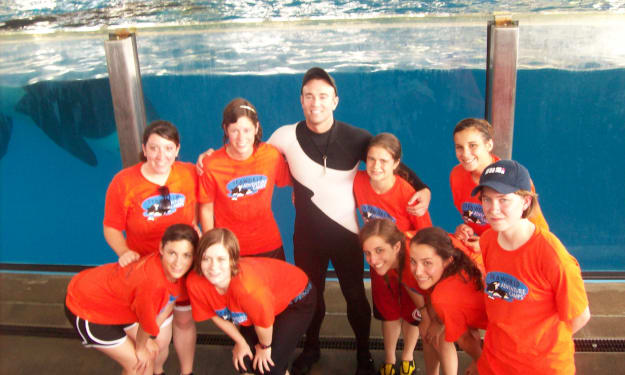New Female Calf in J-Pod Brings Hope to the Southern Resident Orca Population
The calf, who is known as J56, brings hope to the troubled Southern Resident orca population following last summer’s tragic setbacks involving members of J-pod.

In May, researchers based at the Center for Whale Research sighted a newborn calf off the coast of Tofino, Washington. At the time, the calf, who was later determined to be a healthy female, was seen swimming with two females. One was named Tsuchi, who is also known as “J31”, and another was named Eclipse, who was also known as “J41”. At first, the researchers were not really sure which of these two female whales was the calf’s mother, but after a second sighting of the calf that occurred two months later, the researchers were able to determine that the calf was in fact, the daughter of Tsuchi. In fact, her May 24th birth helped bring the population’s numbers up to around 76 orcas.
Researchers were able to determine her gender after a series of photographs of the calf with her pod were taken near Pile Point in the San Juan Islands over the weekend. In the photos, the calf can be seen briefly breaching on the water's surface to reveal her undersides while her mother swam around her and the other animals who were present with them. In a statement, the Center for Whale Research declared J56’s birth as a very “welcoming addition” to the endangered Southern Resident orca population which so much news about the whales dying from starvation.
Before J56 was born, there were thought to have only been 75 Southern Resident orcas. This is because the majority of the remaining animals were male, which meant that every new female that was born into the population had a potential to one day contribute new calves in hopes to increase their numbers. J56 is also believed to have been Tsuchi’s first successful birth in the past decade since she is thought to have suffered a miscarriage in January 2016. Experts believe that in order to have the population to be maintained, there would have to be about two, or three births a year.
About a year ago, researchers began to note that orca populations around the world were struggling from the effects of lack of food source, pollution, and climate change. However, it turned out that it was the breeding females (between the ages of 6-45 years of age) who appeared to be struggling the most. The long gestation period of around 15-18 months and a two-year nursing period comes at a huge cost to both orca mothers and their calves.
The Southern Resident population continues to struggle as the result of habitat destruction by the building of dams, lack of food sources, pollution and the effects of vessel noise. In addition, the lack of salmon runs has forced the mammals to look for their primary food source elsewhere in the Pacific Northwestern coast. As a result, pregnant whales are unable to carry their pregnancies to term with 70 percent of those pregnancies failing.
Recently, the orcas were absent from the Puget Sound region as a result of the lack of Chinook salmon they rely on for their survival. Some scientists have called for the breaching of dams in order to increase salmon runs to help the orca population out to ensure that they would be able to have enough fish to feed on.
It should also be noted that two members of this particular population were not sighted during the two days that the pods were present in the Salish Sea. J-pod Matriarch, Princess Angeline, also known as “J17”, and Scoter, who is also known as “K25”, were not sighted at all. They were both last sighted around the end of 2018 and are both feared to have died.
About the Creator
Jenna Deedy
Zoo and Aquarium Professional, Educator, Cosplayer, Writer and B.A. in Psychology whose got a lot to share when it comes to animals, zoos, aquariums, conservation, and more.
Instagram: @jennacostadeedy






Comments
There are no comments for this story
Be the first to respond and start the conversation.